It was no mistake that Leo Frank was from good German-Jewish genetic stock, especially given the racially conscious and eugenic breeding patterns interwoven within Jewish history, tradition, and culture. Leo Frank was not only endowed with innate intelligence, but fortunate enough to have been provided with the kind of opportunities and enriching environment he needed to achieve success in life. It seemed back then in 1913, as it does now, so unlikely that a clean-cut, well-dressed Jewish boy from Brooklyn, having successfully completed an Ivy League education, would commit such a heinous crime, but one thing we have learned from history is that class, wealth, education, and status do not always determine one’s capacity to commit sadistic crimes of violence.
The early years…
Meet the Parents and Closest Family Members of Leo M. Frank
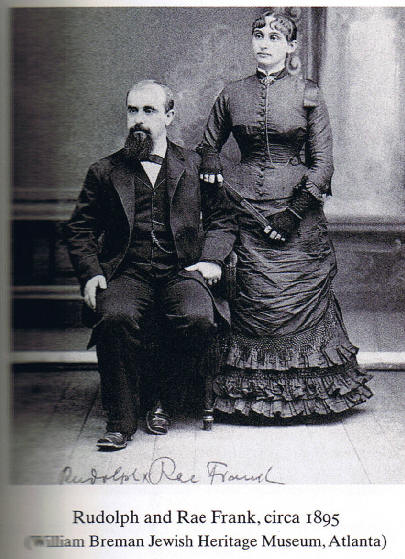
Rudolph Frank was a man who embraced the diaspora spirit, living in at least three vastly different places and making several major career changes during his life, at a time when most people typically never left the local regions or states they were born. Unlike today where anyone can order a plane ticket online and travel to most parts of the world in twenty-four hours, in the 1800s national and intercontinental travel was painfully slow and often dangerous, because safety was uncertain and the incidence of communicable diseases was high.
Rudolph Frank had some medical training and experience in his ancestral homeland before he emigrated from Germany to NYC at twenty-five years old. Once in the United States, Rudolph never completed his medical studies to become a bona fide physician. Had he done so, he could have plugged into the lucrative doctor-pharmacy matrix.
In Brooklyn, 1881, when the average life expectancy at the time was forty-something years old, at the ripe old age of thirty-seven, Rudolph Frank “robbed the cradle” and married a young Jewess, fifteen years his junior.
In her early twenties, the young bride Rachel would experience a major culture shock, leaving the “cosmopolitan comforts” of New York City behind, making an unlikely and dramatic move to other side of the country with Rudolph to start a new life. The newlyweds traveled together to far off, rural, and makeshift Cuero, in Southeastern Texas. Cuero (meaning hide in Spanish) was a dusty Texas frontier town in the middle of nowhere, known for its turkey and cattle ranching.
Rudolph and Rachel lived in Cuero for about three years. Rudolph, the breadwinner of the family, served as the local postmaster for Cuero.His original federal documents for his postmaster appointment signed by President Arthur has astonishingly survived into the 21st century (Koenigsberg, 2012).
Ray J. Frank, a humble housewife, became pregnant in July of 1883, and the following year, she gave birth to a son, Leo Max Frank, on Thursday, April 17, 1884. Three months later, the Frank family left Cuero, Texas, for good, and returned to NYC during the month of July. They stayed with the family network and community until they could make their own way.
Rudolph made several visits to see his son Leo in Atlanta, Georgia, during his son’s marriage to Lucille Selig, November 30, 1910, and years later he would eventually visit during Leo Frank’s numerous court appeal hearings (1913 to 1915) when possible. Though oddly enough, Rudolph and his brother Moses were not present at the month long 1913 Leo Frank summer trial.
On Monday, August 18, 1913, during his grandiose statement to the jury, Leo Frank explained why his father Rudolph Frank was absent from his 1913 capital murder trial, by saying his father had become “invalid” (Leo Frank Statement, Trial BOE, Monday, August, 18, 1913).
In NYC, Rudolph took employment as a traveling salesman until he became broken down decades later and was unable to work any longer. He had inevitably burned out in sales, something to be expected after decades of this high stress and potentially lucrative career path. Rachel Jacobs Frank had more precisely described Rudolph as having his “nervous crisis” around 1911 to 1912. Rachael stated she and her spouse were living on the interest of $20,000 they had loaned out (Rachael “Ray” Frank Testimony, Leo Frank Trial Brief of Evidence, August, 1913). Not too shabby by 1913 standards. At a generic 5% to 10% or $1000 to $2000 a year, they could live middle class style in Brooklyn, NYC.
The Summer Heights of 1884
In July 1884, when Rudolph and Rachel moved to back to Kings County, NY, it was a permanent move. Together they lived there in Brooklyn for nearly four decades, the remainder of their natural lives.
Leo Frank’s parents lived long lives for the early 20th century, a time in U.S. history when life expectancies hovered between forty-five and fifty-five years. Concerning Rudolph Frank as an observer, when all things are considered, his nervous crisis, the Mary Phagan affair, and the tragic loss of his son, he lived a relatively long life when he passed away at seventy-seven from cancer on Sunday, January 22, 1922 (Rudolph Frank Death Certificate, 1922, Retrieved 2012).
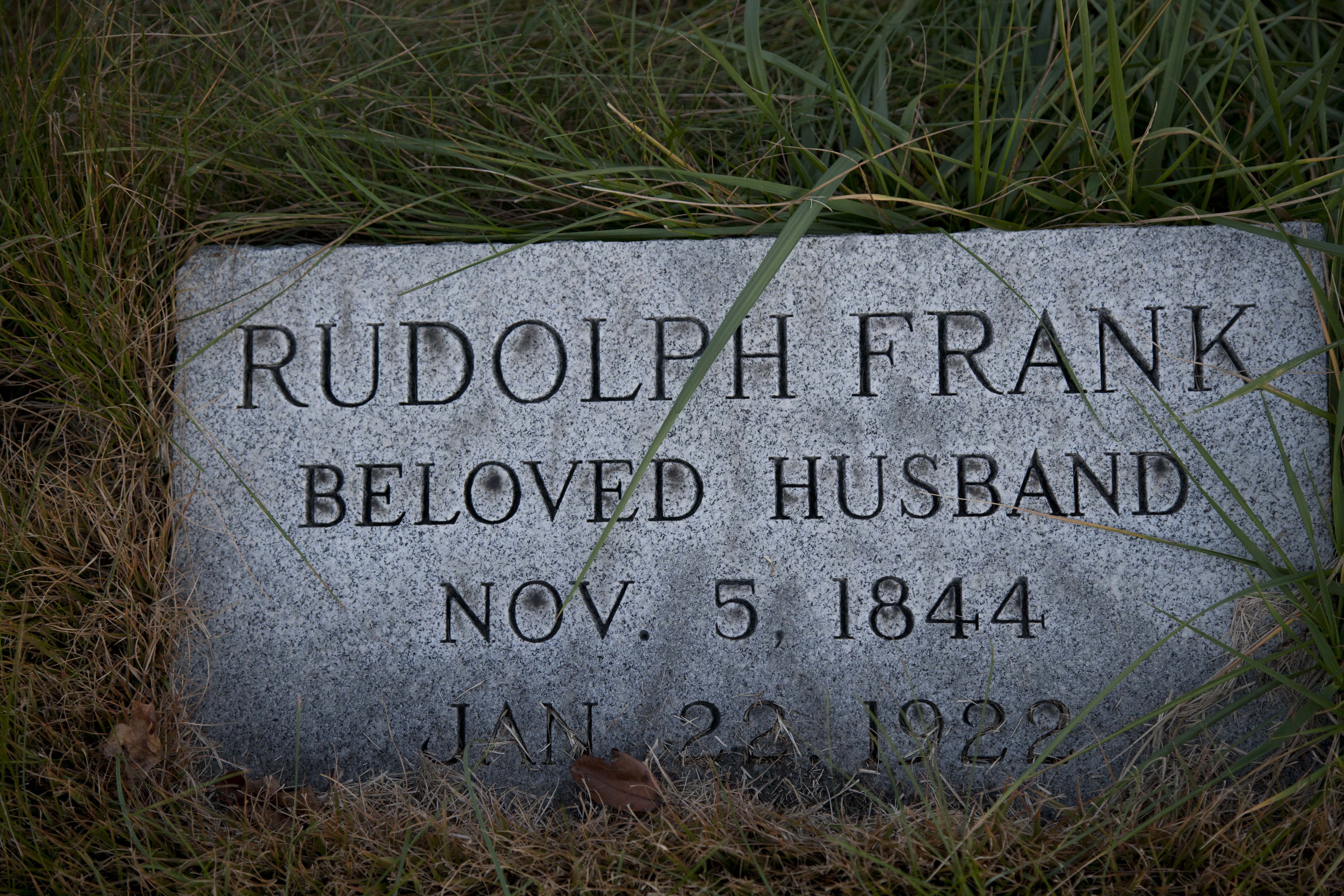
The image of two empty grave sites (#1, #3) on either side of Leo Frank (#2) was a powerful image, because they were reserved for his wife Lucille and mother Ray, the women who were faithfully at his side during the trial and appeals.
Rachel Jacobs got married and went on her way with the debonair Rudolph Frank.
The Mother of Leo Frank: Rachel “Ray” Jacobs Frank (Saturday, April 16, 1859 to Thursday, January 1, 1925), a native U.S. citizen of Ashkenazim Jewish heritage, was born of immigrant German-Jewish parents and lived in Brooklyn, NYC. And she was not only raised in Brooklyn, but spent the vast majority of her life in New York, except for the odd three-year stint in Cuero, Texas, with Rudolph.
More defining in Rachel Frank’s life was the numerous weeks and months she spent in Greater Atlanta, Georgia, during the 1910 wedding of her son Leo Max to Miss Lucille at the Selig residence located on 68 East Georgia Avenue. Ray would most certainly visit for other Frank-Selig family affairs and was a fixture at the Leo Frank trial, sitting by her son. She is remembered for her outburst during the trial when she called Hugh M. Dorsey a “Christian Dog” before being whisked out of the courtroom with a face full of tears.
Rachel was more than just invincibly present every day during the emotionally difficult Leo Frank murder trial (July 28 to August 21), but she mounted the witness stand to testify on her son’s behalf. Ray later appeared during several of Leo Frank’s numerous appeal hearings (1913 and 1915). Her final encounter with Leo was at Penn Station in Manhattan, when her slain son arrived by train at 6:00 in the morning on Wednesday, August 18, 1915. Leo Frank had been cleaned and embalmed in Atlanta after 10,000 people viewed his naked corpse, and his family held an open casket ceremony for him at the Frank home on 152 Underhill Avenue in Brooklyn, before he was laid to rest Friday morning, August 20, 1915, in Glendale, Queens.
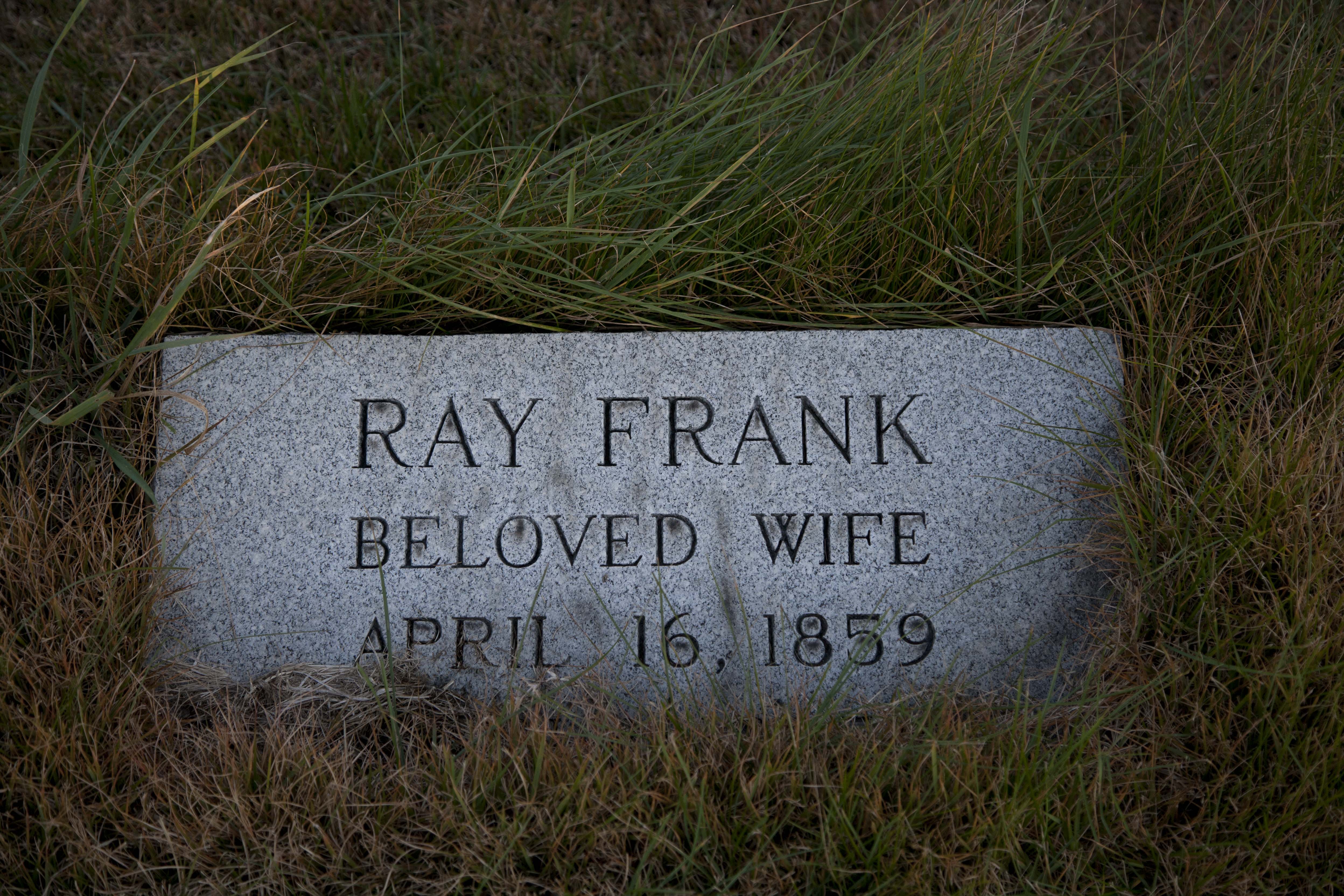
The official real estate ID location for Rachel Frank is 1-E-41-1035-3. With Ray (#3) taking the spot to the immediate right of Leo (#2) and immediate left of Rudolph (#4), the empty grave site to the left (#1) of Leo was still available and reserved for Lucille Selig Frank.
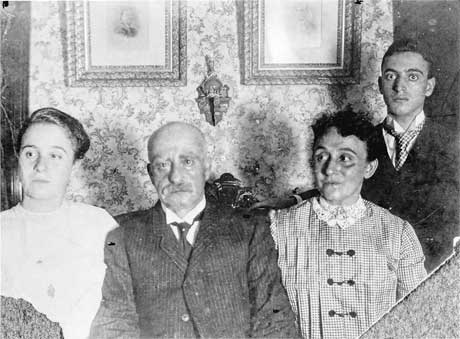
Together Marian and Otto had four children, two girls and one boy over a number of years; their first child was stillborn and buried in a designated spot under where the Frank-Stern bench is placed, grave site #7 (1-E-41-1035-7). Astonishingly, one of Marian Stern’s daughters born in 1919 is still alive today at the ripe old age ninety-three as of 2012, living in Brooklyn, NY.
The Frank-Stern family grave plot at the Mount Carmel Cemetery was originally purchased by Marian and Otto Stern in 1911.
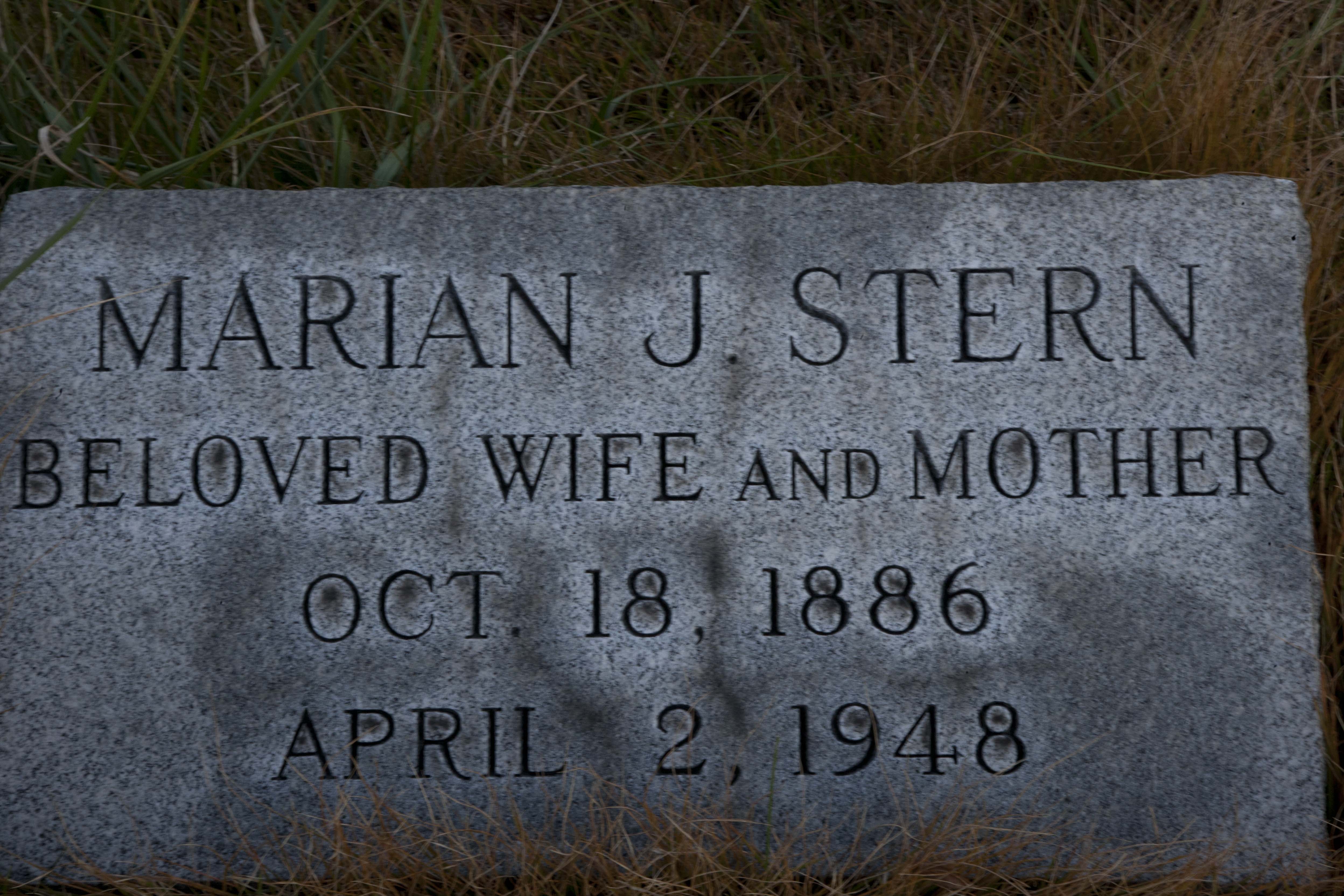
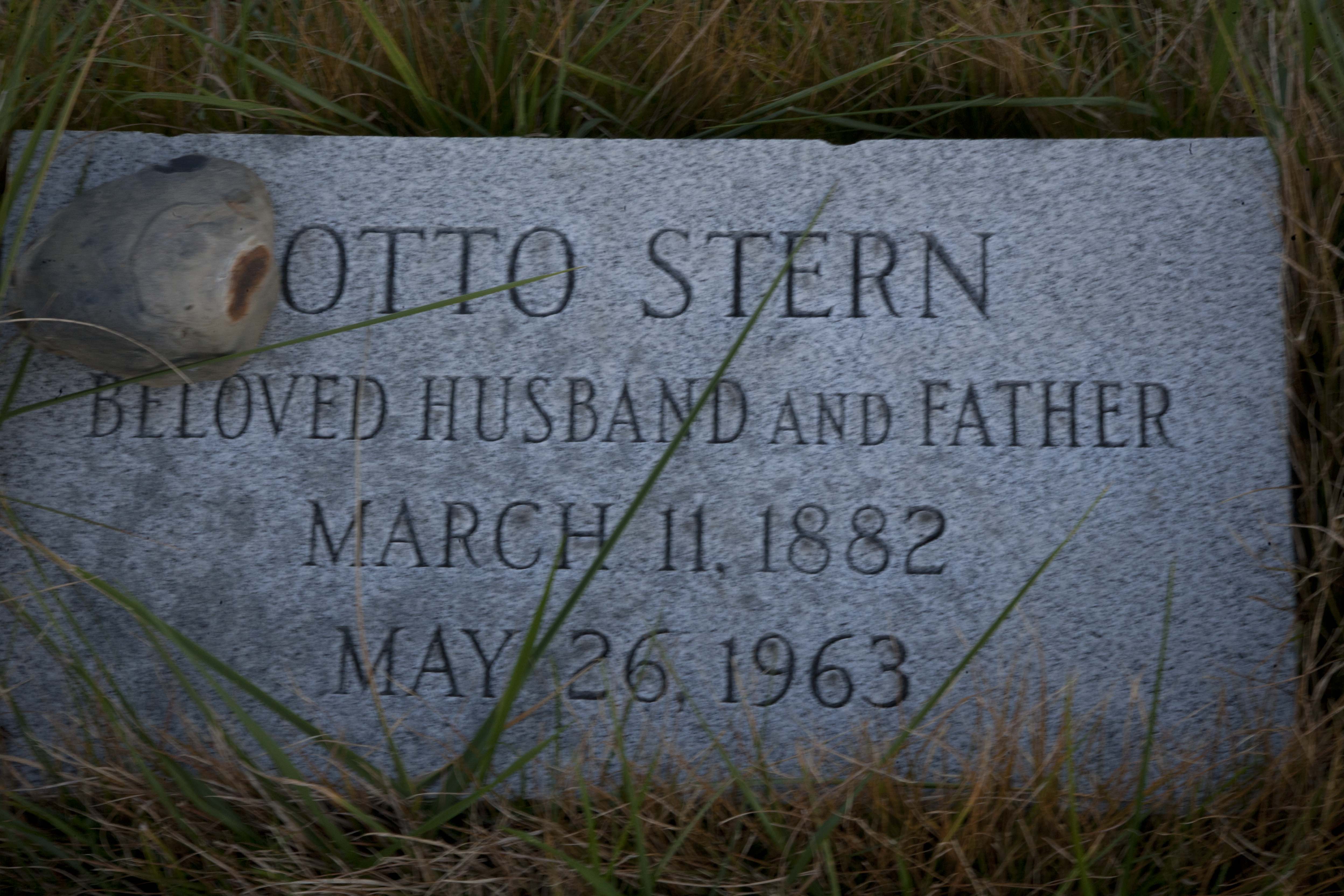
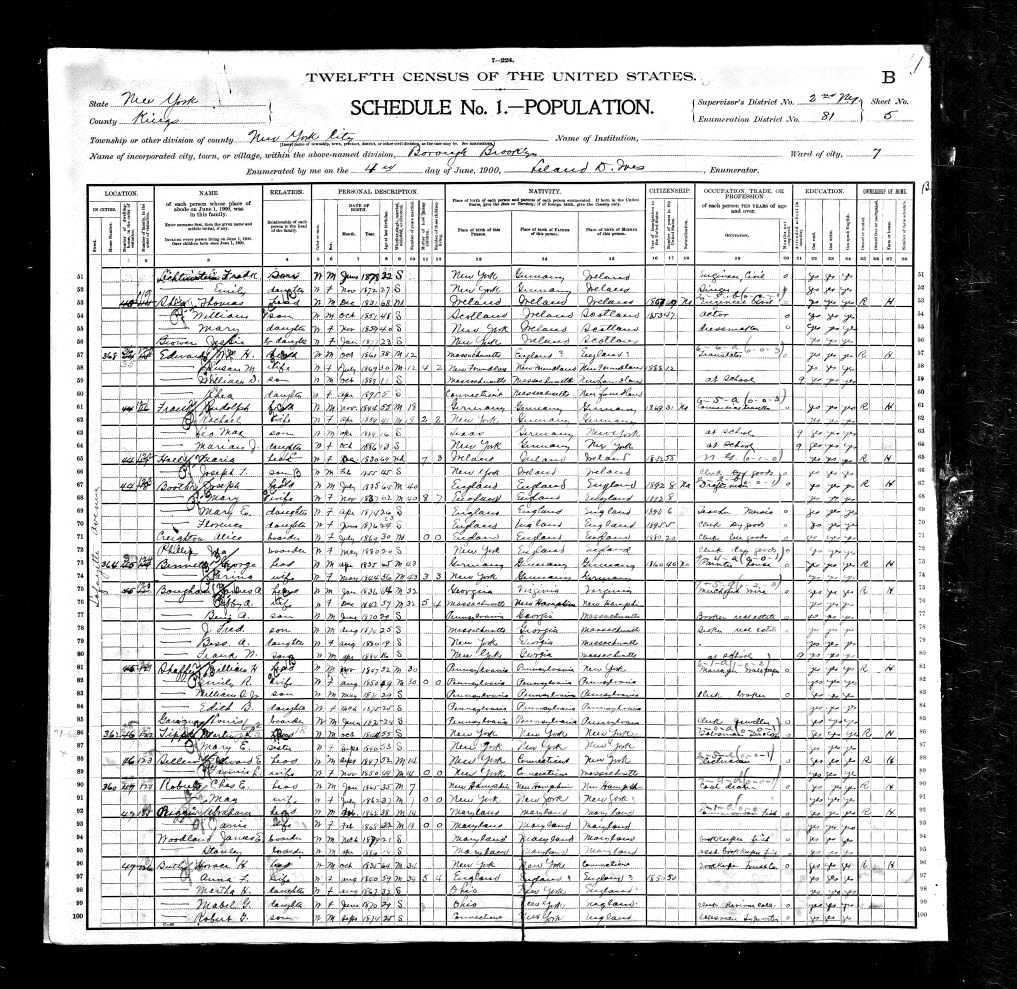
Moses Frank (1841 to Monday, October 24, 1927)
Rudolph Frank’s older brother, the savvy investor Moses Frank, was a clever man who made his fortune infamously in cotton and cotton oil speculation.
Moses was a major investor, shareholder, and visionary who in part made the National Pencil Company possible, along with the NPCo major stockholder, the treasurer Sigmund Montag, a paper-manufacturing magnate.
According to Koenigsberg, “Moses Frank, an 1856 immigrant from Dudelsheim in Hesse-Darmstadt” (2012), naturalized as an American citizen in Atlanta, 1865, or New York, NY, 1864, depending on different accounts within the Ellis Island Manifest Records (Ellis Island Archive Records, Retrieved 2011). Moses Frank adopted Atlanta as one of his twin home bases and traveled back and forth from Brooklyn, NYC. New York City was the primary staging ground for Moses during his numerous junkets, and the public Ellis Island Ship Manifest Records indicate a number of trips to Germany (Ellis Island Archive Records, Retrieved 2012).
Marriages of Moses Frank: In Atlanta, Moses Frank married his first wife Jane Wilson Kelly, a (divorced) woman who had three children. And after she died in 1904, as a widower, Moses Frank married young Sarah, twenty years his junior, and she joined the Frank clan tying the knot with Moses in 1909, becoming Aunt Sarah Frank. Moses had no children with his first or second wife.
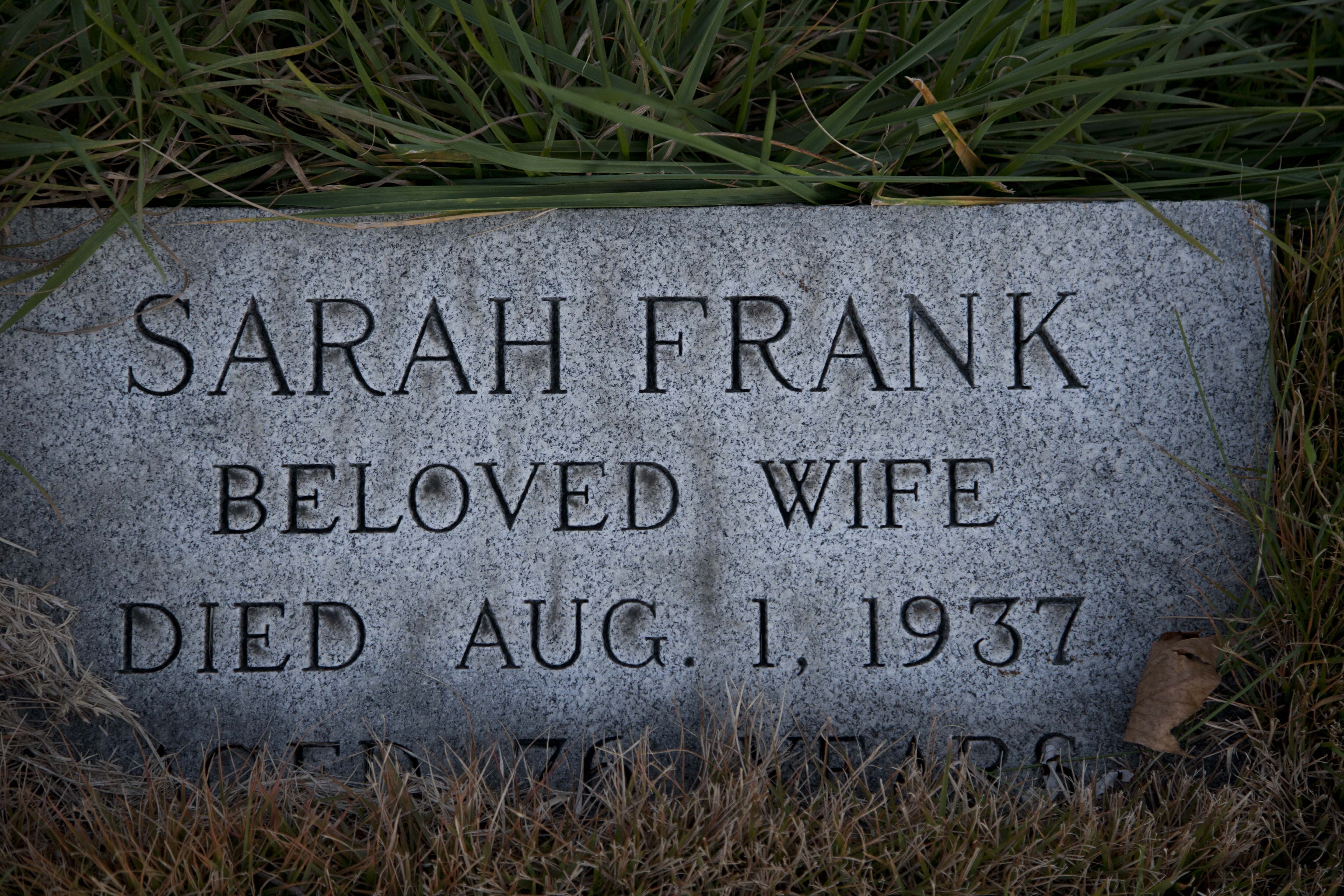
In the early 20th century, when people typically died in their 4th and 5th decade, the long-lived Moses Frank survived to the ripe old age of eighty-six, passing away on Monday, October 24, 1927 (MCC, 2012). When all things are considered, Moses Frank led an awesome, interesting, well-traveled, complicated, and fulfilling life. This is despite the unknown loss of his time and investment in the National Pencil Company, because of it folding in 1916 over the terminal effects resulting from the strangulation of Mary Phagan.
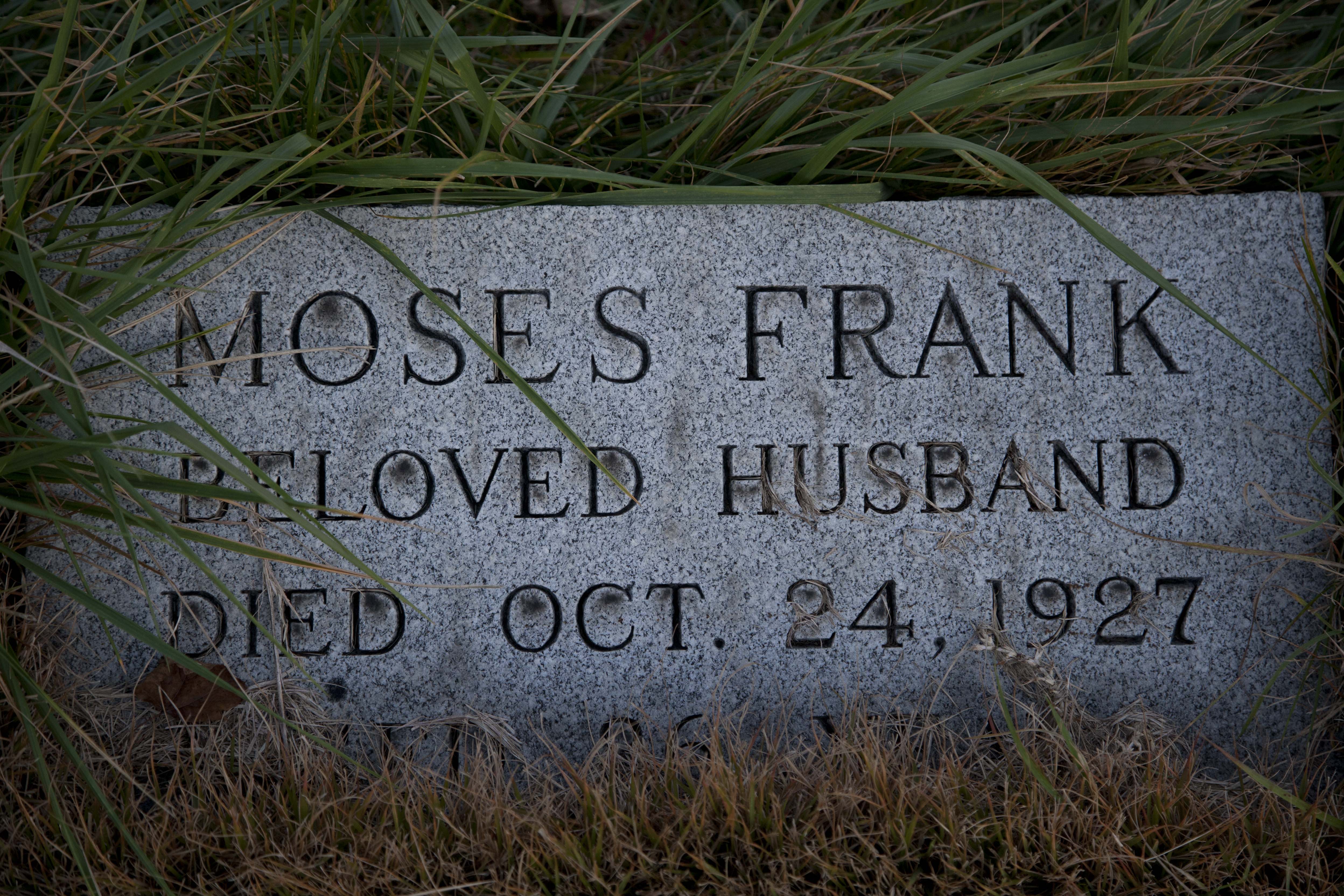
Uncle Moses Frank the Confederate Veteran?
Steve Oney and other Leo Frank authors describe Moses Frank as, “Confederate veteran Moses Frank” (Oney, 2003, p. 10), but despite this claim being over cited by numerous Frank partisan authors without any reliable sources to back it up, Moses Frank never served in the Confederate Army according to the high survival rate of enlistment documents. No records or reliable evidence support that Moses was ever in any U.S. Military, North or South, nor do any of his numerous eulogies refer to him as a Confederate veteran (The Leo Frank Case, Open or Closed, Koenigsberg, 2012).
Reuben Rose Arnold, October 1913
The unsubstantiated claim of Moses Frank as a Confederate veteran seems to come erroneously from Attorney Reuben Rose Arnold who, on a whim, October 24, 1913, during an official court hearing, argued for Leo Frank to get a new trial. There Mister Rube made a passing mention of Moses Frank as a Confederate veteran in his emotional-appeal speech to the Presiding Honorable Judge Leonard Strickland Roan (‘The Trial of Leo Frank, Reuben R. Arnold’s Address to the Court on his Behalf’ in October 1913).
Perhaps Reuben Arnold threw in that unverified fact hoping it would make Leo Frank seem less of an outsider to the South, but Frank had lived as a prominent part of Atlanta for five years and was elected B’nai B’rith president by the five hundred member fraternity, so those emotional strings pulled–warm and fuzzy as they were–did not help his appeal. Reuben Rose Arnold’s speech to get Leo M. Frank a new trial came off as a bit hollow and flabby, and Judge Leonard Strickland Roan rejected the appeal.

With undeniable symbolism, Lucille soundly rejected that proposition of being buried in grave plot #1 (1-E-41-1035-01) so far away from home and yet so close to her deceased husband Leo Frank buried in grave plot #2. The rejection was handled with the utmost of subtle politesse that transcended time and space. Lucille spoke volumes beyond the passing of life when we delve deeper into her aftermath.
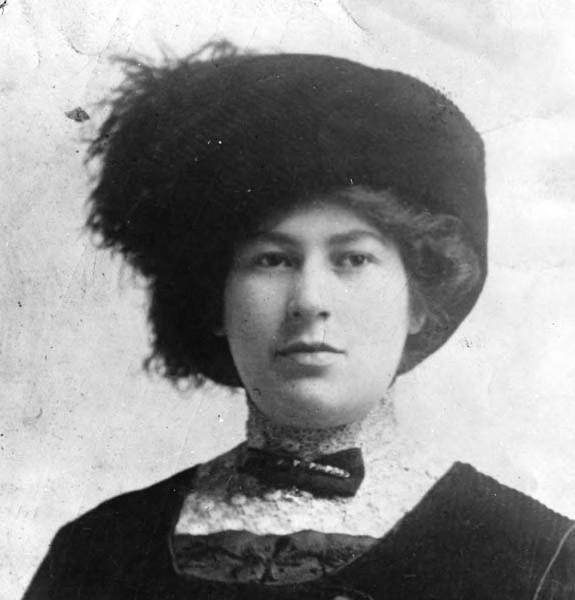
Grave Plot #2: Leo Max Frank 1-E-41-1035-02 Tuesday, 08/17/1915
Grave Plot #3: Ray Frank 1-E-41-1035-03 Thursday, 01/01/1925
Grave Plot #4: Rudolph Frank 1-E-41-1035-04 Sunday, 01/15/1922
Grave Plot #5: Moses Frank 1-E-41-1035-05 Monday, 10/24/1927
Grave Plot #6: Sarah Frank 1-E-41-1035-06 Sunday, 08/01/1937
Grave Plot #12: Marian J. Stern 1-E-41-1035-12 Friday, 04/02/1948
Grave Plot #11: Otto Stern 1-E-41-1035-11 Sunday, 05/26/1963
Harken Back to 1881 in New York City
An Arranged Marriage in the Jewish Enclave of Brooklyn
Step back in time to the early 1880s, New York City. Not at all uncommon throughout Jewish history and the era, an arranged marriage was organized involving a much older Jewish gentleman named Rudolph Frank and a reasonably young, healthy, and attractive Jewess named Rachel Jacobs, affectionately known as Ray by her friends and family.
The traditional marriage was, in part, the Hallmark of the typical selective breeding program that has been a defining fixture over the centuries for Jews. Though people scowl at the thought of an older man marrying a young woman, evolutionary theory suggests, the older intelligent gentleman marrying a young healthy breeder has many evolutionary and eugenic advantages.
Rudolph Frank “robbed the cradle” and was almost fifteen years Rachel Jacobs’ senior. Ironically, Leo Frank was nearly fifteen years Mary Phagan’s senior when Phagan was strangled. Rudolph and Rachael married in the Jewish enclave of Brooklyn, NY, during 1881. After their marriage and honeymoon, they made the great voyage to Cuero (Paris), Texas, for the next three years (1881 to 1884) in the wild-wild Southwest.
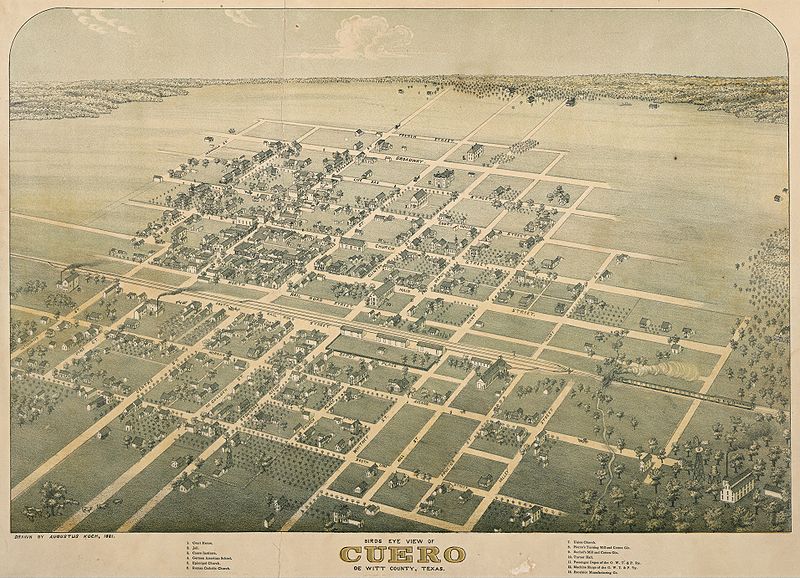
Several years after Rudolph Frank and Rachel Jacobs married in 1881, they created the modern-day proverbial “perfect nuclear family” and had two children, a boy and a girl, in the “perfect order,” first a son named Leo Max, who was born at their Texas residence April 17, 1884, followed by a daughter Marian J. in Brooklyn, two years thereafter on the 18th of October in 1886.
Leo, Rudolph, and Rachel Frank: Early Family Life in Texas – 1880s and Onward
Brooklyn native, Rachel Jacobs Frank (a New Yorker by birth), aka “Rhea” or “Ray,” traditional for the time, became a young home maker at the age of twenty-two, after her marriage to Rudolph in 1881, but the young housewife felt like a withering flower once she was uprooted and then transplanted into the scorching dust planes in the makeshift town of Paris (Cuero), Texas.
Urban Rachel Jacobs likely felt blah after being transplanted so far away from her parents’ home base in the more civilized Brooklyn, leafy sylvan, an eternally urban-suburban hip borough of New York City where the best and brightest of Judaism intermingled their genetic algorithms.
For the Jewish gene pool, the mega-cities of America, like NYC, Chicago, etc., offered the best protection and opportunity for Jewish genetic improvement by the Americanized Ashkenazim, who were historically Jewish immigrants from the cold Northern and Eastern parts of Magna Europa, which extended to the Ural Mountains. It was not just Manhattan, but Brooklyn that often attracted the best of the Jewish Diaspora from all over the world–the most aggressive, racially aware, eugenically conscious, creative, revolutionary, and intelligent of World Jewry conglomerated in what could have been loosely labelled territories of little Israel in the making. Historically, some of the best and brightest of Jews have some connection with not just Brooklyn, but also Manhattan, and other NYC boroughs that serve as unofficial Jewish enclaves for the sons and daughters of the diaspora.
Summer Heat of 1883: The Conception of Leo Frank
One day during the hot, dry Texas summer on July 17, 1883, all the biological stars were in alignment, Rudolph (age thirty-eight) and Ray (age twenty-four) had, after nearly two years of marriage, finally conceived their first child.
It’s Official: Ray Frank Is Pregnant, Summer of 1883
The pregnancy would eventually be affirmed for sure when during the early first trimester, Rachel began experiencing all those unmistakable signs of being pregnant. At a time when infant mortality was high, the pregnancy would have naturally been stressful, but also a glorious, celebrated time, not knowing what would eventually come of the child later in life and wondering the gender. Is it a boy or a girl? What do they name their child?
For a father in the making, feelings of manliness, fear, and uncertainty are associated with a pregnancy. For an old goat like Rudolph in 1883, knowing he was going to become a father at the age of thirty-nine, when the life expectancy at the time seemed fixed at around forty-five years, it would have likely ignited a youthful spirit within him. This is most typical of married men who are about to become a father for the first time. Despite the fears, Rudolph was likely beside himself with joy and praying for a son.
And his prayers seemed as if they were answered before he uttered them.
Hurray! It’s a Boy!
They did not know it at the time, because there were sonograms available, but they would be surprised and delighted at birth. On Thursday, April 17, 1884, a son was born to the Franks. Leo Frank had entered the world in their wooden frame home in their small backwoods Texas town. The Franks’ humble little abode was located about one hundred or so miles from San Antonio, Texas.
Talk of moving away for better opportunities and “greener pastures” began before Leo was born and would intensify immediately thereafter, because more importantly, the social infrastructure and extended family network was back in Brooklyn, NOT in the fields and listless wasteland grassy planes of wild west 19th century Texas. At the time, Texas, a massive state with a population of less than two million, was sparsely populated, with fields and prairies that seemed to extend endlessly beyond the horizon in every direction.
It is said, that as hard as it is to believe, in a modern age, where every keystroke and communication is recorded, they didn’t have birth certificates back then in most of rural Texas, especially in that “neck of the woods.”
It’s Time to Pack Our Bags, HONEY–We’re Movin’ (BACK) to Brooklyn!
The freshly formed Frank clan would follow through with no doubts or hesitations, embarking on an arduous journey, and the three of them would soon emigrate forever from the provincial town of Cuero, Texas, back to the hustling, bustling cosmopolitan Northeast. For the urbanite, Brooklyn was where one could live deeply and suck the marrow out of the bones of life, to borrow a phrase of Henry David Thoreau.
1884 Summer: Rudolph, Rachel, and Sweet Baby Leo Frank
A tumultuous turning point for the new Frank family began with the summer of 1884. The complicated move at the time would have taken weeks of careful planning, organizing, and packing the essentials. Their voyage was unfolding at a time in U.S. history when far-reaching travel was rough and painfully slow, but fortunately, patience was plentiful, though trying at times. The Frank family made the right choice when they decided to relocate from the small town of Cuero, Texas, thousands of miles away, back to Rachel’s hometown. Brooklyn, that timelessly inspiring borough within the periphery of NYC, a place of brick, rock, and brownstone clad buildings, and other architectural variety, style and wonder.
Home Sweet Home
Brooklyn had “better everything,” a place where everyone would benefit and have more opportunities. Though unlike Texas during certain times of the year, their arrival in Brooklyn was at the thickest, sweatiest peak of the sweltering New York City summer. No words could describe the ecstasy of finally settling in for a bit, sliding into and marinating in a soothing and large claw-foot bathtub after such a long stinky trip. The voyage likely had too many stop overs, random annoyances, and delays to count.
One doesn’t realize how important some basic necessities are until they aren’t available. In Brooklyn, it would have been so nice to have plumbing and toilets with running water vs. the crescent moon carved and shabby phone booth style outhouses of Texas that perpetually stunk to high heaven.
And murky well water? For Ray — gross.
Hello, Brooklyn
Cute little cone-headed, round-faced baby Leo Frank, who not only looked more like his mother in his early years than his father, but he also inherited Ray’s generically bland good looks too. Sweet baby Leo Frank was barely three months old at the time of the epic pilgrimage and relocation; he was still suckling nourishing milk from his mother’s bosom at the time. It likely helped put him to sleep. The long train rides would naturally be both soothing and traumatic for baby Leo, but possibly instilling a little bit of that restless spirit in the environmental mix with his diasporatic genetic heritage. After all, his uncle Moses was a globetrotter and his father an immigrant who had lived in many different geographical places.
The Franks traveled when the world was once a big place. That dramatic trip from one side of the United States to another would not be Leo’s last, and it certainly would have left a powerful impression upon him in an abstract way. Perhaps when he took trains in his later years there was an engram of the train’s rhythmic lullaby that soothed him to sleep long ago when he was an infant.
Leo Frank would make even more dramatic journeys than his continental train rides, with two transatlantic European trips–one was a short duration during the summer of 1905, and one was a long duration from the fall of 1907 to the summer of 1908 (Leo Frank Passport Application, 1907, Ellis Island Ship Manifest Records Archive, 1905, 1908, Retrieved 2012). Finally, after settling into NYC, Rudolph Frank took a job as a traveling salesman and his wife Ray resumed her role as homemaker. Two years later and in the colder NY months, a baby sister had arrived; Marian J. Frank was born during a chilly Brooklyn day on October 18, 1886.
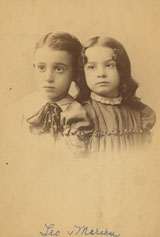
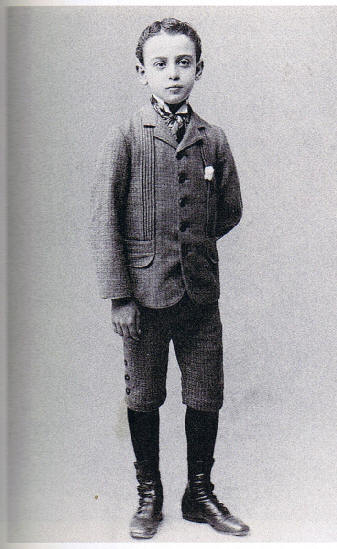
The High School Years of Leo Frank
Last Updated: August 2012